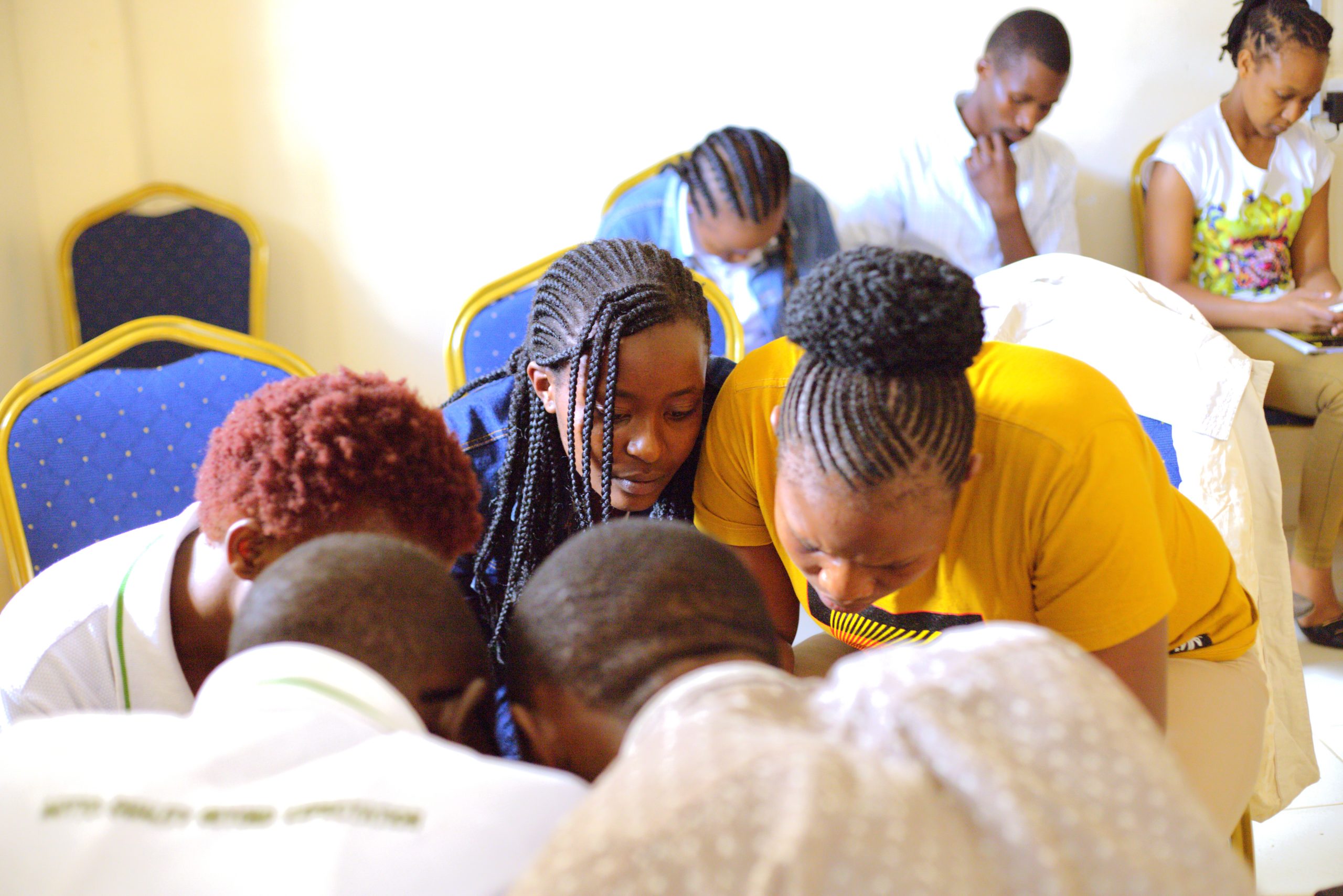Is Our Food Secure?

Lois Ndiba of Food Safety International Leads the Training (Image By Amadi Kwaa Atsiaya)
In 1984, there was a dirty incident in Oregon, USA where supporters of the Rajneesh movement infected a local restaurant’s salad bar with salmonella in their bid to influence local elections. More than 750 people were taken ill. Luckily, no deaths were reported. The attack was one of the first bioterrorist incidents of significance in the United States.
The Cyanide Incident

Participants In a Group Discussion (Image By Amadi Kwaa Atsiaya)
In 2006, someone entered a supermarket in Michigan and sprayed food items with sodium cyanide. This led to the death of one woman as a result of eating contaminated food, while several others got hospitalized. Investigations led to the discovery that the culprit was a disgruntled employee of the pest control company who worked at the supermarket.
The Deadly Chinese Milk Formula

Ruth Kinyua All Ears As Trainer Expounds a Point (Image By Amadi Kwaa Atsiaya)
In 2008, milk and formula made in China were found to be contaminated with melamine, a toxic chemical used in plastics and fertilizers. The contamination was catastrophic, for it resulted in the hospitalization of thousands of infants, six of whom died. Investigation into this unfortunate incident revealed that it was caused by the supplier adding melamine to the diluted milk to boost the protein content.
The Centrality of Food Defense

Trainer Lois Ndiba Attends To Questions From Participants (Image By Amadi Kwaa Atsiaya)
These case studies show us the importance of food defense in preventing intentional food contamination. A food defense strategy includes implementing safety measures at food production facilities, conducting background checks on employees, and monitoring the supply chain for potential threats. That’s why food processing and handling companies take food defense so seriously because lapses in food defense could have dire consequences. It is in this spirit that Superfine Africa Nuts Limited decided to conduct rigorous training in food defense for its staff. On hand to conduct the training was Lois Ndiba from Food Safety International, a consultancy firm that offers training in a wide range of areas related to food safety and defense.
Security, Safety, and Defense

Group Discussion Going Down In Earnest (Image By Amadi Kwaa Atsiaya)
If there are three confusing terms in the food industry, these could be food safety, food security, and food defense.
Food safety is the whole spectrum of steps that are taken by those involved in food handling, preparation, and storage to see to it that the food they are producing is fit for human consumption by ensuring that it is free of bacterial, viral, parasitic, or any other substance contamination.
Food security is the state of having reliable access to sufficient quantities of nutritious food that consumers can afford. The food should also be utilizable, and sustainable. This is considered a fundamental human right.
Food defense has everything to do with the protection of food from acts of advertent contamination or adulteration by ill-intentioned individuals or groups. This may include acts of terrorism, sabotage, extortion, or other criminal acts. Food safety measures aim to prevent or reduce the impact of such events on the food supply chain and safeguard the consumers’ health against such acts.
In the Wake of 9/11

Wanjiku Mute In a Group Discussion (Image By Amadi Kwaa Atsiaya)
The concept of food defense came into popular discourse following the 9/11 terrorist attacks in the United States. This is an experience that exposed the American food supply chain’s susceptibility to intentional contamination. Since then, government and industry players the world over have put in place a variety of strategies and best practices to address this mortal threat. These include risk assessment, hazard assessment, mitigation plans, and employee training programs.
Traceability

All Eyes On the Trainer (Image By Amadi Kwaa Atsiaya)
A crucial aspect of food defense is the establishment of a traceability system that allows for the rapid withdrawal of contaminated products in the event of an incident. This calls for rigorous record-keeping and data management systems that enable the traceability of products from end to end.
Food Poisoning

Participants Following (Image By Amadi Kwaa Atsiaya)
All these measures are important because the food industry faces many threats, from contamination to fraud. One of the biggest threats is food poisoning caused by pathogens such as Salmonella, Listeria, and E-coli. These pathogens can contaminate food at any point in the supply chain from farm to fork. Contamination can occur through improper hygiene practices, improper storage conditions, or improper cooking temperatures. Another threat to the food industry is intentional adulteration and food fraud. This is when food labeling is intentionally falsified or bungled for economic reasons. For example, a product may be labeled as organic when it is not, or expensive ingredients are used instead of more expensive ingredients.
Company Reputation on the Line

FSI Trainer Lois Ndiba Stresses a Point (Image By Amadi Kwaa Atsiaya)
Not to gainsay the impact of food defense flaws, such incidents can also significantly ruin the reputation of a company or even the entire industry. Apart from the threat posed by the 9/11 terrorist attack, in the recent past, there have been several major incidents of food contamination leading to illness and death. These incidents have resulted in increased industry scrutiny and increased regulation.
Environmental Factors

Monica Christine Introduces Herself as Mwikali Mumo and Yvonne Obuyekha Look On (Image By Amadi Kwaa Atsiaya)
Apart from human interventions that pose a threat to the food supply chain, there are also environmental factors such as climate change and water scarcity, which can pose serious threats to the food industry. Adverse changes in weather conditions can affect crop yield and quality, and water shortages can affect irrigation and processing operations.
Food Defense Training

Group Discussion Underway (Image By Amadi Kwaa Atsiaya)
As demonstrated, the food industry faces multiple threats that can affect the safety and quality of the food supply. These threats include contamination, intentional adulteration, reputational damage, and environmental factors. Food defense training goes a long way to forestall the ravages that could be brought about by gaps in vigilance guarding against possible threats to food.
Reported By Amadi Kwaa Atsiaya.





